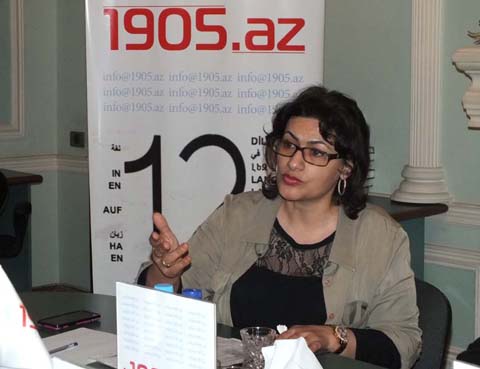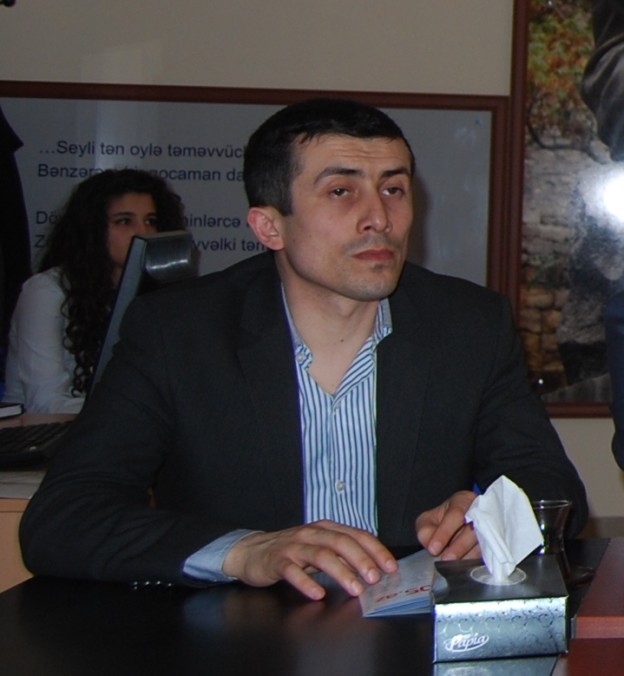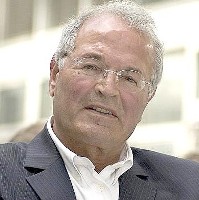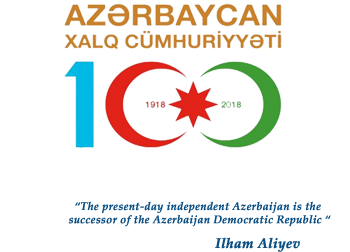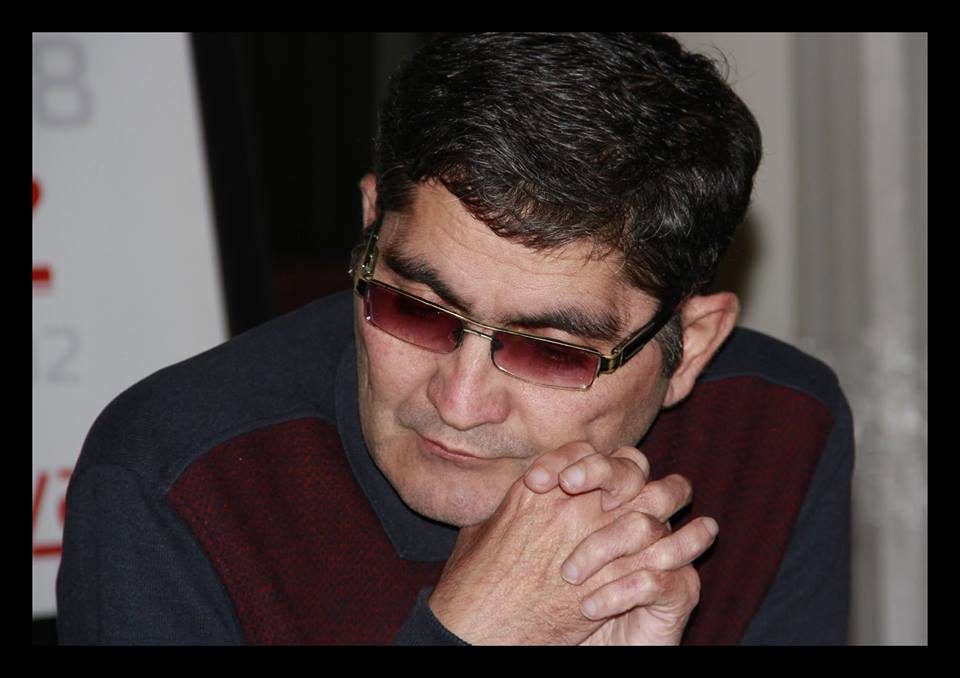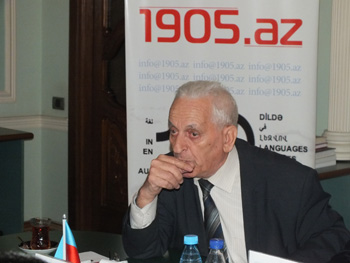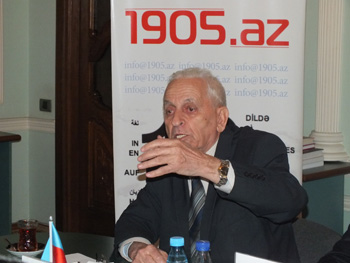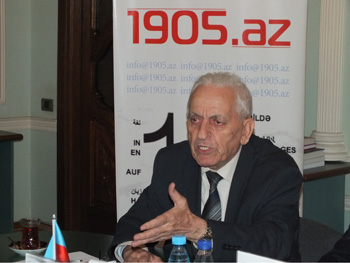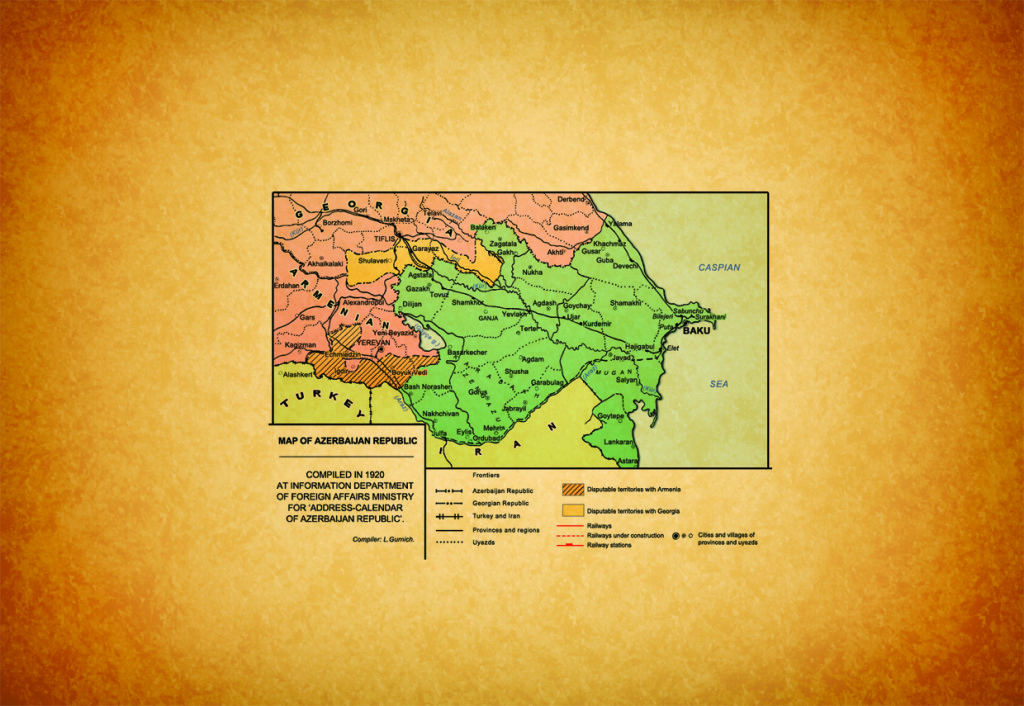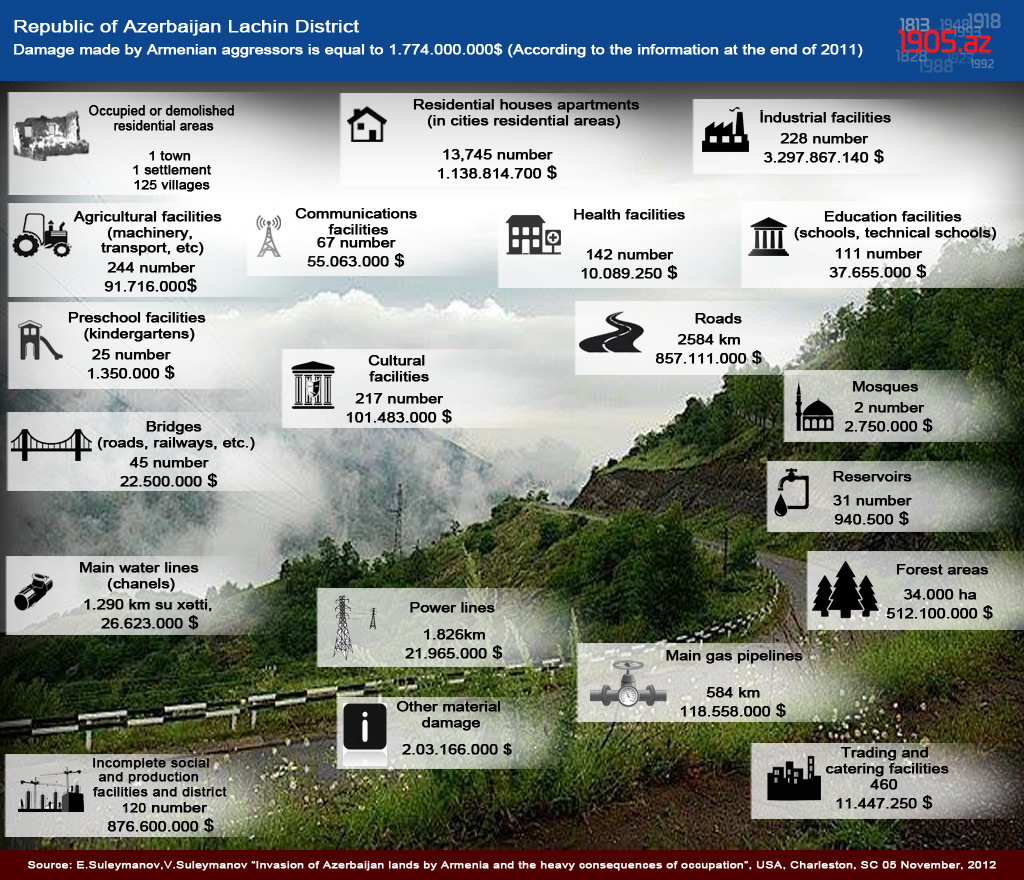Ismail Akhundov, head of working group of the State Commission on Prisoners of War, Hostages and Missing People, answered the questions of 1905 portal.
– Mr. Akhundov, 25th anniversary of horrible Khojaly Genocide is approaching. We would like you to speak about State Commission’s activity with regard to the consequences connected with this tragedy during the recent years.
– As is known, it is not the only genocide act committed by Armenia against Azerbaijani nation during XX century. However, there are a number of points distinguishing this crime of genocide from others. To realize these points deeply we should first investigate the period of occurrence of genocide, social and political situation of that period, including internal and external influences. This investigation should be done in social and publicist as well as military, political and legal context. It is impossible to come to the right conclusion without the profound investigation of those points. It is necessary to mention that, the State Committee on Prisoners of War, Hostages and Missing People is mainly engage in liberating hostages, war prisoners, search for missing people as well as reveling their following fate as a result of the Armenia-Azerbaijan Nagorno-Karabakh conflict. As the State Commission was founded a year later the Genocide, in the January 1993, it did not directly participate in reliving humanitarian disaster committed by Armenia during the Genocide. However, the scale of this humanitarian disaster caused during this Genocide act is so wide that it is necessary to take the serious and consistent measures in order to identify the final fate of the people. I have to particularly underline one point: It is important to release the occupied territory of Azerbaijan in order to clarify the final fate of all people who went missing both as result of Khojaly Genocide and as result of the Armenia-Azerbaijan Nagorno-Karabakh conflict. The fact of occupation is a serious obstacle to the solution of humanitarian problem. Despite all these difficulties, the State Commission on Prisoners of War, Hostages and Missing People carry out necessary work to fulfill the task set by the President of Azerbaijan Republic, Mr. Ilham Aliyev, in this field. It should be noted that Mr. President attaches great importance to this problem. In the recent years, the Commission made serious efforts to specify the list of all the missing people, as well as people who went missing during the Khojaly Genocide. After being appointed the chairperson of the State Commission on Prisoners of War, Hostages and Missing Persons by the order of the President of Azerbaijan Republic dated October 30, 2015, State Security Service’s chief, General-Lieutenant Madat Guliyev set it as a main task to accomplish this specification of list by the end of 2016. At present, we are very close to accomplish this process. Undoubtedly, this work also includes the people who disappeared during the Khojaly Genocide. It is well known that on the eve of the Genocide in Khojaly, the Azerbaijanis driven out from their native land in Armenia and the Azerbaijanis expelled from the villages of mountains of Karabakh as well as Ahiska Turks also settled in the city a long with the residents of this city. Therefore, there were a lot of people living in the city on the eve of the Genocide. For this reason, it is possible that the figures will change during the investigation process. At present, according to the Commission’s final report, 195 people have been registered by the Commission as missing people during the Genocide. There are 36 children, 64 women and 33 elderly people among them. According to the witness statements, it was determined that 95 out of 195 people were taken as a hostage or war prisoner during the occupation. In addition, the Commission have taken and put into archive the written information and video statements given by the majority of the Khojaly residents released from hostage and captivity.
– What can you say about the detention places of war prisoner-hostages taken from the town of Khojaly?
– Before answering this question, it is important to clarify another point. As you know, Armenia is still spreading absurd information about the creation of the corridor for the civilians to leave the city during the attacks to Khojaly. However, both the investigation and analysis made by the Commission and evidences presented by the witnesses during the investigation of the criminal case of the Genocide confirm that the city was fully surrounded on all sides and the real genocide was committed against the civilians. A number of the city’s population was killed while trying to escape violence. Even for this purpose, a separate Armenian terrorist gangs set ambushes in the predefined locations. The absence of the corridor during the event is confirmed also by foreign journalists and representatives of international organizations. It is no coincidence that according Russia’s “Memorial” human rights’ center, 200 corpses were brought from Khojaly to Agdam for four days, dozens of facts of disfigurement on the bodies were reviled. 181 Corpses (130 men, 51 women including 13 children) were examined by a forensic medical expertise. During the examination it was reviled that 151 were killed by gunshot wounds, 20 people were assassinated by splinter and ten people were killed by blunt objects. Judicial protection center also registered the fact when alive person’s skin was pilled out of his head. During the attack to the city the people mainly moved in the direction of Agdam. As a matter of fact the people had no other way out. The aim of the people moving in this direction was to reach Agdam in order to escape massacre carried out against them. However, the enemy made accurate preparation on these points. The massacre of the people, killing of the last person appeared to be the important military strategic aim. To this end all the high ways leading to Khojaly were completely blocked four months before Genocide act, at the end of October in 1991, the only connection with the city was by helicopters. As on January 28th of 1992 the MI-8 helicopter flying from Agdam to Shusha was shot down and exploded over the village of Khalfali by the missile fired from Khankendi , the helicopter connection with Khojaly had also been suspended. Afterwards occupying the last residential areas of Azerbaijanis in Upper Karabakh one after another the Armenian army completely encircled Khojaly. The significance of this Genocide committed in Khojaly for Armenia was that they wanted to wipe out this ancient settlement of Azerbaijan. Being located 10 kilometers south-east to Khankendi, between the roads Agdam-Shusha and Asgaran Khankendi, Khojaly concerned Armenian political military junta as a crucial strategic area. The only airport of Upper Karabakh located in Khojaly was another fact making the city more significant. From this point of views Armenian armed forces main objective was to take control of the Asgaran-Khankendi road passing through Khojaly as well as the capturing the airport in Khojaly. This military strategic advantage would play crucial role in realization of Armenians further occupational plans. Besides being one of the ancient areas belonging to Azerbaijan Khojaly was also distinguished with its historical cultural monuments. It is not surprising that while killing local residents brutally Armenian destroyed Khojaly monuments conceded as a precious example both for Azerbaijan and word using vandalism to eliminate Azerbaijan and Turkish traces. Pursuing 7 thousands population including historical monuments Khojaly is considered to be significant city after Shusha. Now, let us go back to main part of your question. As I mentioned the people of the city moved in the direction of Agdam and were killed in the area between this two city. The survivors were taken as hostages or war prisoners and they were subjected to the most crude and brutal acts in the history of humankind. The hostages were kept in the stables of the villages Pircamal and Dehraz being located in this area, as well as in the prison of the low enforcement bodies in the city of Asgaran, some of them were taken before Khankendi, later to Armenia.
– The State Commission is implementing the program “Ante Mortem” together with International Committee of the Red Cross. What is the role of this program to solve the problems regarding Khojaly.
– At first, I want to inform you that the framework treaty on collecting and managing centralized way the Ante Mortem information about the people who disappeared as result of the Armenia Azerbaijan Nagorno Karabakh conflict was signed in April 2008, between the Representative of International Red Cross Organization in Azerbaijan and State Commission. The main objective of the treaty is to collect comprehensive information about the missing people as a result of conflict, and use this information during expertise and identification of unknown human remains found in the future. After signing framework treaty the first necessary step was to collect the comprehensive information about the missing people. This work was carried out by volunteers of Azerbaijan Red Crescent Organization with help of ICRC. As it is reported in total 3500 questionnaires were collected and presented to ICRC. Under the provision of the program on the usage of Ante Mortem\Post Mortem date base signed between State Commission and ICRC on 26th of January 2011, all the collected information was included into the electron date base. This work is done by the employees of State Commission trained by IRCO in advance. By now the information about 2447 people have been already included to date base. In this regard specialist of ICRC are assisting the working group. In this faze the most important issue is to collect and save the DNA examples from the relatives of missing people. During the discussion held in 2013 as a pilot project it was expedient to take saliva samples. A special place was chosen to save the samples. The pilot project put forward by ICRC for taken biological samples among 100 persons from the families of missing people was successfully fulfilled in 2014 and this work is underway now. With participation of the two institutions the work has already been completed in Absheron Peninsula, and it is being continued in regions of Salyan and Neftchala. It will include all the missing people. So far in total 3164 samples were collected completely from 694 families and partly from 450 families. This project will clarify the fate of the people who disappeared in Khojaly alongside with the missing people as a hole. This project is the one which has been tested to identify the fate of the missing people who disappeared during recent conflicts in different areas, especially during the conflict in Yugoslavia in 1991-1995 years. To a certain extent we are aware of the results of this project realized in the above-mentioned areas and there for we hope it will give us the same positive results. By the way I would like to mention that, since the beginning its activity in the region ICRC has been efficiently collaborating with State Commission and the results are positive. At the beginning of this year, after the appointment of Elena Aymone Sessera as a head of representation of ICRC in Azerbaijan Republic the work of the institution has been accelerated. The personal participation of Ms. E. Sessera in the exchange process of the bodies of dead servicemen killed during the battle in April from both side is a good example for that. We thank Ms. Sessera for expedient collaboration with State Commission. And hope that will get useful results in identifying the further fate of the missing people in the framework of this cooperation.
–Mr. Akhundov, are you investigating the ways of prosecuting Armenia as a country roughly violating the requirements of Geneva Convention?
–Armenia which has triggered the conflict of Nagorno Karabakh violated not only the Geneva Convention of 12th August 1949 but also international laws and principles as a hole, and is still continuing such kind of activity before the international community. Unfortunately, the leading countries accepting the norms of international law, at the same time created double standards approaches to these norms. In fact, the issue of suing Armenia on International Tribunal for the crime committed against Azerbaijan Nation has always been in the center of attention. As it is known the joint investigation-operation group of General Prosecutor Office, Interior Ministry and State Security Service was established by the initiative of National Leader Heydar Aliyev as a result of wide discussions made in State Commission regarding the investigation of the crimes committed by the armed groups of self-proclaimed Nagorno Karabakh Republic and Armenian military units. Since then the Commission has closely collaborated with investigation group. All the necessary information and materials collected by the working group has been presented to the investigation group. At present, this collaboration is continuing regularly. According to the information received from investigation-operation group one can tell that the concrete information was collected about the people committing crimes during Nagorno Karabakh conflict. During the investigation process the investigation group has announced a search for 296 people found guilty. 31 of them was directly charged with the Genocide act committed in city of Khojaly. We believe that certain people committing crime against Azerbaijan Nation will be brought to justice. The draft resolution in respect with Khojaly Genocide which is going to be prepared in the Azerbaijan National Parliament will make new contribution to giving legal assessment to these crimes and the protection of the human rights of the people subjected to Genocide.
– Mr. Akhundov, how do you inform the international community about our citizens who disappeared, taken as hostages, war prisoners. Which steps are going to be taken in the run up to 25th anniversary of this horrible tragedy.
– In general, the Khojaly Genocide as well as other Genocide and criminal acts as a hole committed by Armenia against Azerbaijan Nation during XX century were given legal and political assessment after our National Leader Heydar Aliyev returned to political power in 1993. The appropriate document regarding Khojaly Genocide approved by our National Parliament in February 1994, including the decree on the March 31, the day of the Genocide of Azerbaijani People signed by our National Leader Heydar Aliyev on 26th of March 1988 and other normative documents can be presented as an example. I obliged to add one more document to this list. It is a decree about establishment of State Commission on the people who disappeared, were taken as hostages or war prisoners signed by our national Leader
Heydar Aliyev on 1st of March 2001. Particularly with this decree the genius Leader set certain task for the Commission “to carry out expedient and consistent work to inform the international community about the legal and historical documents reflecting the Genocide and ethnic cleansing committed by Armenia against Azerbaijanis including the materials on the hostages, war prisoner and missing people. In short, I can say that the above mentioned joint investigation-operation group was set up to fulfill the duties prescribed by this decree and at present it is continuing its activity. Besides, the working group of the Commission has realized consistent, expedient and systematic work in this field over the previous years. In general more than two hundred thousand propaganda guidelines prepared in more than 20 languages with the initiative and participation of State Commission have been sent to the Embassies of our Republic to different countries, to diaspora organizations, including to famous world’s libraries and education centers, in addition these documents were handed out among the politician, experts on conflicts, journalists, foreign state and public figures, as well as being spread in the events held around the world. The geographical field of the spread of the materials almost covers all the leading countries of the word. On this purpose wide events including scientific conferences are held within the country and abroad. At present this process was set as one of the main direction of Azerbaijan’s foreign policy. As a result of the successful foreign policy carried out by the President of Azerbaijani Republic, Mr. Ilham Aliyev a number of international organizations presented Armenia as an aggressor in the documents accepted by these organizations. Consistent steps have been taken in order to draw the word’s attention to the truth of Khojaly, spread it throughout the international community and give the Genocide objective assessment. Undoubtedly, the most remarkable work is fulfilled by Heydar Aliyev Foundation, especially, by its President, goodwill Ambassador of UNESCO and ISESCO, Member of our National Parliament, Ms. Mehriban Aliyeva and the vice president of Foundation Ms. Leyla Aliyeva’s initiative to set up the campaign “Justice for Khojaly” on 8th of May in 2008 gave strong rise to the recognition of the Genocide throughout the word and achievement the political and spiritual assessment in the international community. Now days the Campaign aimed at achieving recognition of the Genocide at the spiritual and political-legal level is being realized successfully in some countries. As is known The President of Azerbaijan Republic, Mr. Ilham Aliyev signed a separate decree on the 20th anniversary of the Khojaly Genocide on 17th of January in 2012 and personally took part in the nationwide march held in the same year. Proceeding from this point of view we can say that the 25th Anniversary of the Genocide will be commemorated at high level and the necessary work will be carried out for its recognition in the world. We hope the people committing crimes against humanity and mankind in Khojaly will be brought to justice. Unless the humanity lost its justice, it will come true.
Mr. Akhundov thank you for such a wide interview, we wish you and the organization headed by you great success for your activity in this sensitive and hard work which is very significant for our nation.

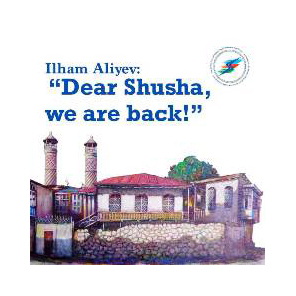
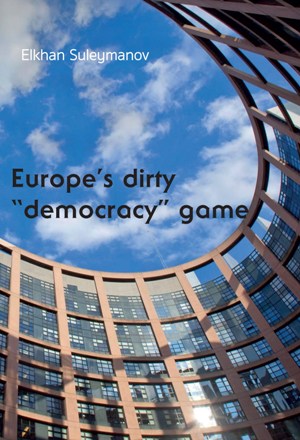
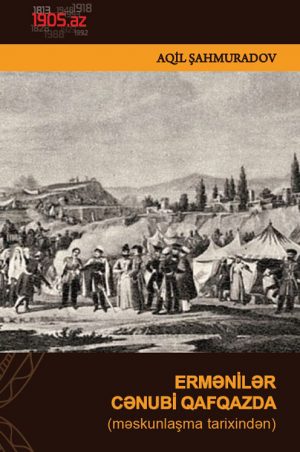
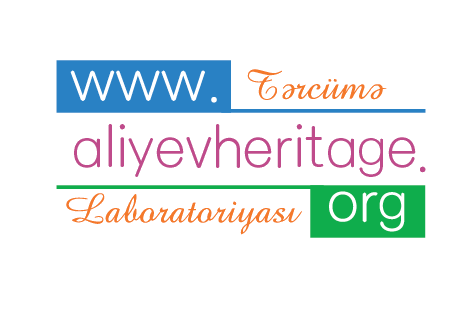


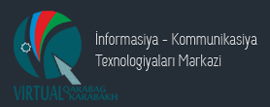

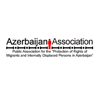


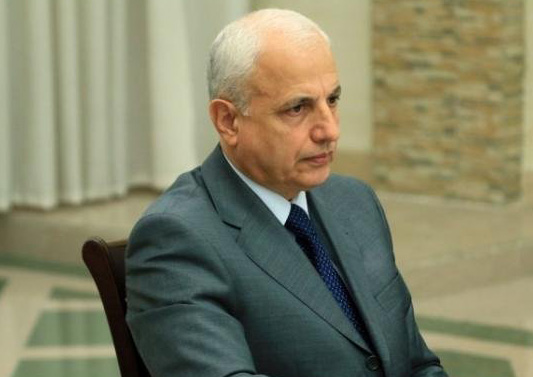
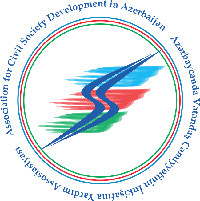
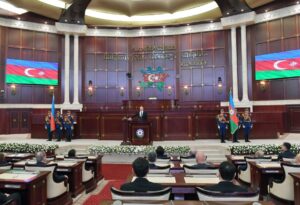 Inauguration ceremony of President of Azerbaijan Ilham Aliyev was held
Inauguration ceremony of President of Azerbaijan Ilham Aliyev was held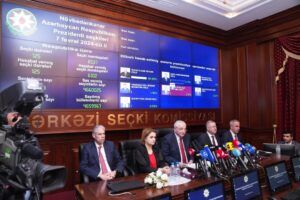 Ilham Aliyev wins presidential election with 92.05 percent of votes VIDEO
Ilham Aliyev wins presidential election with 92.05 percent of votes VIDEO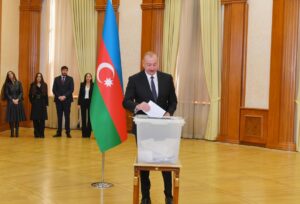 President Ilham Aliyev, First Lady Mehriban Aliyeva and family members voted in Khankendi VIDEO
President Ilham Aliyev, First Lady Mehriban Aliyeva and family members voted in Khankendi VIDEO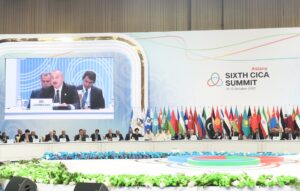 Plenary session of 6th Summit of Conference on Interaction and Confidence Building Measures in Asia gets underway in Astana. President Ilham Aliyev attends the plenary session VIDEO
Plenary session of 6th Summit of Conference on Interaction and Confidence Building Measures in Asia gets underway in Astana. President Ilham Aliyev attends the plenary session VIDEO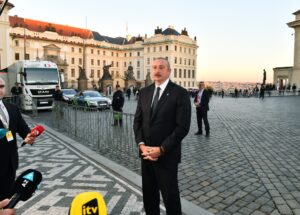 President Ilham Aliyev was interviewed by Azerbaijani TV channels in Prague VIDEO
President Ilham Aliyev was interviewed by Azerbaijani TV channels in Prague VIDEO



